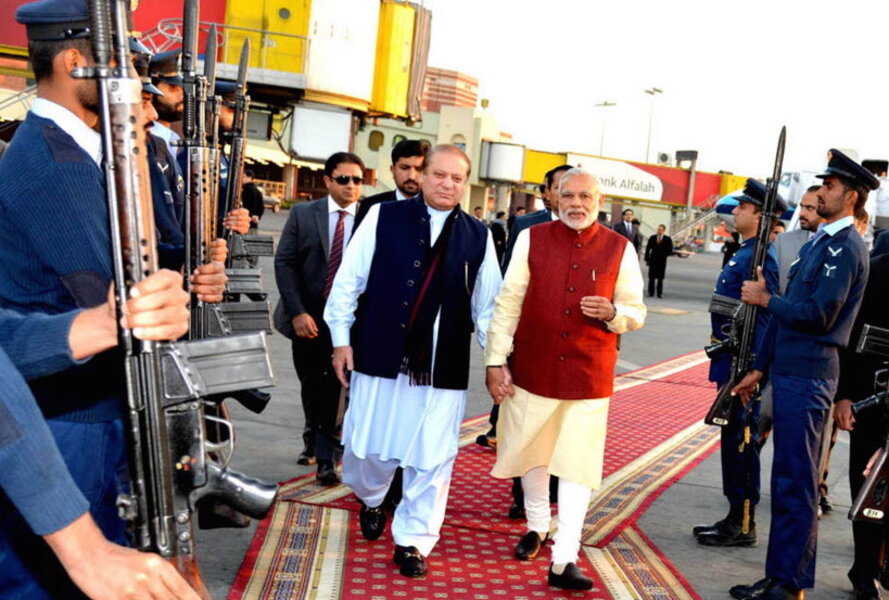A bright hope for 2016: India and Pakistan reconcile
One of the most hopeful events in 2015 was a surprise visit on Christmas Day between the prime ministers of India and Pakistan, Narendra Modi and Nawaz Sharif. Their power lunch showed a spirit of generosity for the leaders of two nuclear powers so long at odds that South Asia is viewed as the most dangerous place on earth.
While one summit does not make peace, the visit hints that the two countries may now be able to transcend difficult issues of territory, terrorism, religious divide, and national identity.
One possible motivation for the sudden warmth: Both leaders may empathize with the other about the urgent need to tackle poverty rather than allow tensions to hinder economic growth. As the rest of the world has moved toward interdependence, Pakistan and India have remained mired in post-colonial quarrels for 68 years, a result of an awkward and violent partition of the Indian subcontinent in 1947.
If the visit leads to further progress in 2016, such as expanded cross-border trade and people-to-people exchanges, the event could go down in history like the warming of relations between Germany and France after World War II. Formal talks between India and Pakistan are due to start in January.
The Dec. 25 visit was not the first time that leaders of the two countries have met. But these two were particularly friendly, holding hands, sharing gifts, and smiling while talking at the home of Mr. Sharif in Lahore during his birthday celebration and his granddaughter’s wedding. Over the past year, their diplomats have laid the groundwork for possible rapprochement, making concessions on a few key issues.
Pakistan’s military, for example, has awakened to the threat from any terrorist group, especially after a large-scale attack on an Army school for children last year. And India appears far more willing to work with its smaller neighbors than to dominate them.
Suspicions remain, of course, driven largely by jingoists, military hawks, and opportunistic politicians in each country. Yet with a past steeped in Hindu nationalism, Modi’s unusual outreach to Pakistan could reduce domestic backlash. In Pakistan, meanwhile, a powerful military and an elected civilian leadership may finally be in sync on foreign policy.
Both countries are eager to improve investments and take advantage of strategic shifts in Central Asia. Peace seems possible in Afghanistan, for example. Sanctions on Iran may soon be lifted. And China is investing heavily in the region. India and Pakistan want to share in new energy pipelines from their petroleum-rich neighbors. Their economies, each with different strengths, would benefit by an opening of bilateral trade.
But more than matching up selfish interests, India and Pakistan need to embrace common values and build on a shared culture and history. The warmth of the Modi-Sharif visit shows what is possible.





